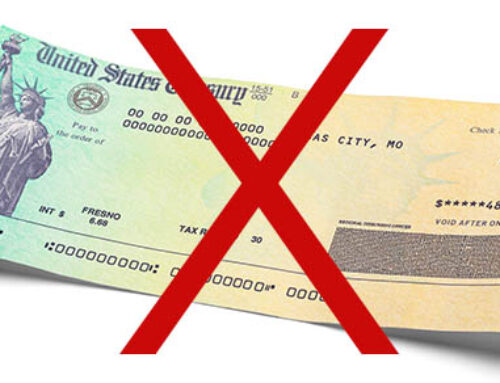The Inflation Reduction Act (IRA) extended and expanded the Section 30D Clean Vehicle (CV) Credit, previously known as the Electric Vehicle (EV) Credit. The credit now covers “clean vehicles,” which include plug-in hybrids, hydrogen fuel cell cars and EVs.
On April 17, 2023, the IRS will publish proposed regulations to clarify how a CV can qualify for the credit. The proposed regs effectively limit the number of currently available models that qualify, due to strict sourcing requirements that will apply to CVs that buyers take delivery of on or after April 18, 2023. The federal government is taking steps to help taxpayers identify eligible vehicles.
The previous EV Credit
The Sec. 30D EV Credit has been available since 2008. Prior to the IRA, it started at $2,500, with a maximum credit of $7,500. (Note that the EV Credit remains available for qualifying vehicles placed in service on or before April 17, 2023.)
It was also subject to a cap based on the number of qualifying vehicles a manufacturer had produced. Because of this cap, some popular EVs — including those made by Tesla, Toyota and General Motors — were no longer eligible for the EV Credit.
The extended and expanded CV Credit
The CV Credit continues to top out at $7,500, but the IRA splits it into two parts, based on satisfying new sourcing requirements for both critical minerals and battery components. Vehicles that meet only one of the two requirements are eligible for a $3,750 credit.
Specifically, an “applicable percentage” of the value of the critical minerals contained in the battery must be extracted or processed in the United States or a country with which it has a free trade agreement, or be recycled in North America. Similarly, an applicable percentage of the value of the battery components must be manufactured or assembled in North America. The IRA increases the applicable percentage for both requirements every year starting in 2023, with initial percentages of 40% for critical minerals and 50% for battery components.
The IRA includes price restrictions, too. Vans, pickup trucks and SUVs with a manufacturer’s suggested retail price (MSRP) of more than $80,000 don’t qualify for the credit, nor do automobiles with an MSRP higher than $55,000. Qualified vehicles also must undergo final assembly in North America.
The credit also is subject to income limitations. It’s not available to taxpayers with a modified adjusted gross income (MAGI) over:
- $150,000 for single filers,
- $300,000, for joint filers, or
- $225,000, for head of household filers.
In addition, the credit isn’t allowed for vehicles with any critical minerals (after 2025) or battery components (after 2024) from a “foreign entity of concern.” The IRA doesn’t define this term, but the IRS and U.S. Department of Treasury have stated that future guidance will address this provision.
The credit isn’t refundable and can’t be carried forward if it’s claimed as a personal credit. It can, however, be carried forward if claimed as a general business credit. If a taxpayer uses a qualified vehicle for both personal and business use, and the business use is less than 50% of the total use for a tax year, the credit must be apportioned accordingly.
Relevant proposed regs
The sourcing requirements are intended to reduce manufacturers’ reliance on suppliers in countries such as China. As a result, many of the proposed regs are of greater interest to manufacturers than consumers. They spell out, for example, processes for determining the percentages of value of critical minerals and of battery components. They also explain how to identify countries with which the United States has a free trade agreement.
But the proposed regs also include several provisions with useful information for taxpayers. For example, the regs define MSRP as the sum of 1) the MSRP for a vehicle and 2) the MSRP for each accessory or item of optional equipment that’s physically attached to the vehicle at the time of delivery to the dealer. This information is found on the label affixed to the vehicle’s windshield or side window. So adding optional equipment can result in losing out on the CV Credit in some cases.
As far as the “final assembly in North America” requirement, the proposed regs provide that taxpayers can rely on the final assembly point reported on the label affixed to the vehicle. Alternatively, they can rely on the vehicle’s plant of manufacture reported in the vehicle identification number. North America refers to the United States, Canada and Mexico.
The proposed regs also discuss the treatment of the credit when a vehicle has multiple owners. They state that only one taxpayer can claim the credit; no allocation or prorating is permitted. In the case of married taxpayers filing jointly, either spouse may be identified as the owner claiming the credit on the seller’s report.
If a partnership or S corporation places an eligible CV into service, the credit is allocated among the partners or shareholders. They can claim their portion on their individual tax returns.
The proposed regs also clarify the MAGI limit. The credit isn’t available for any taxable year if the lesser of 1) the taxpayer’s MAGI for the year or 2) the taxpayer’s MAGI for the preceding year exceeds the applicable threshold. If a taxpayer’s filing status changes (for example, from single to married) during this two-year period, the MAGI limit is satisfied if the MAGI doesn’t exceed the threshold amount in either year based on the applicable filing status for that year.
The MAGI limit doesn’t apply to taxpayers other than individuals. If a qualified vehicle is placed in service by a partnership or S corporation, though, the limit will apply to partners or shareholders who claim their portion of the credit.
In the market for a CV?
While the IRS has promised additional guidance on the CV Credit, taxpayers interested in taking advantage of the credit needn’t wait. The U.S. Department of Energy has created a website that includes a list of eligible clean vehicles. The list will be regularly updated as manufacturers provide information on their vehicles that qualify for the credit. For additional information from the IRS, visit: target=”_blank”>https://bit.ly/3mkTubh. If you have questions regarding the CV Credit, please don’t hesitate to contact us.
© 2023


